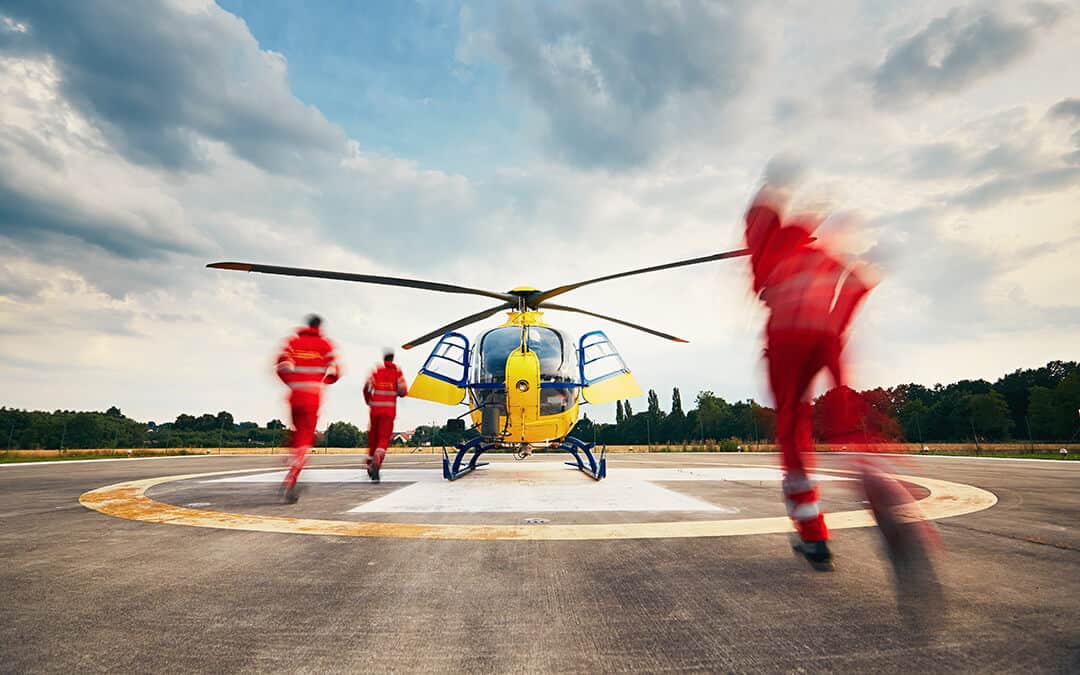Hot air balloons fueled by liquid propane made their debut on the world stage when a balloon by the name of Aérostat Réveillon took flight in 1783. The first passengers? A rooster, a sheep and a duck. Apparently, the balloon managed to fly or float through the air for about 15 minutes before crashing. Interestingly, the first successful air transport of patients occurred during the Siege of Paris. In 1870, it is reported1 that patients were taken from the battlefield and transported to hospitals via hot air balloons.
Since then, air transport has come a long way. We can now transport more than roosters and ducks; we can now safely transport patients in critical condition via fixed-wing aircraft. In fact, today patients in critical condition and patients in remote locations can rely on air ambulances to not only transport them to facilities that can provide better medical care but also to provide life-saving measures en route. Yet, any air passenger knows there are changes to the body and changes to gases at high altitudes.

There’s a lot going on when it comes to aerospace physiology. While “the efficient zone”2 for the human body is defined as sea level 10,000 feet above sea level, there’s typically no need for supplemental equipment or oxygen. However, climb higher, and everything changes. The next zone is called “the deficient zone” (at 10,000 to 50,000 feet above sea level). In this zone, both barometric pressure and the partial pressure of oxygen decrease. Therefore, this is the critical zone in which the human body will require more attention and care when it comes to administering oxygen and other medical care to patients in transport.
Here are the two most common risk categories for air ambulance patients:
1. Air Ambulance Patients Can Experience Hypoxia
Obviously, aircraft cabins are pressurized in order to combat the decrease in the partial pressure of oxygen as the aircraft gains altitude. However, it’s important to consider the patient’s pre-flight condition3: “Patients with pre-transport hypoxia or respiratory compromise are likely to deteriorate in-flight if efforts aren’t made to optimize oxygenation throughout the duration of transfer.”
Negative patient responses include everything from tension pneumothorax to ruptures of surgical wounds to brain herniation and more.

2. Air Ambulance Patients Can Experience Dehydration, Nosebleeds and More
Furthermore, the human body in flight is experiencing the effects of gravitational forces, lowering humidity and temperature changes as the aircraft moves through the air. All of these forces can affect a critical patient who is already compromised. This can result in dehydration; nosebleeds (epistaxis); and drying of the respiratory tract, mouth, nose, eyes and more.
Conclusion
As always, the Journal of Emergency Medical Services4 recommends “continued discussion regarding breathing status and oxygenation must focus on the use of portable oxygen concentrators (POCs) during fixed-wing air medical transport.” Air ambulance personnel must pay attention and make efforts to make their critical patients as comfortable as possible through measures such as equalizing the pressure when the situation demands it. The critically ill patient should also be warmed where necessary. And finally, the noise and vibrations in-flight can be disconcerting and anxiety-producing for patients — and those noises and movements should be minimized where possible.
To learn more about CalOx’s oxygen services and supplies contact us today.
